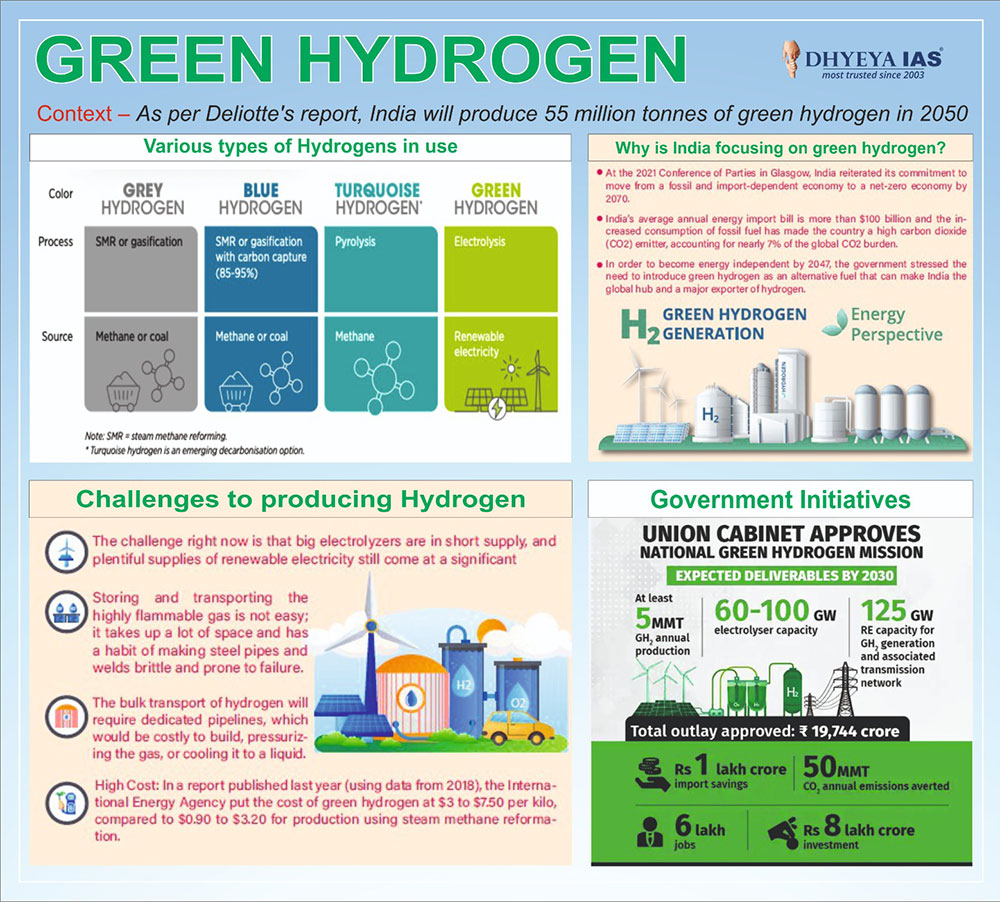
Context –
- As per Deliotte’s report, India will produce 55 million tonnes of green hydrogen in 2050
Various types of Hydrogens in use
- There are four Types of Hydrogen – Grey Hydrogen, Blue Hydrogen, Turquoise Hydrogen, and Green Hydrogen. Green hydrogen is the most Environment- friendly option.
Why is India focusing on green hydrogen?
- At the 2021 Conference of Parties in Glasgow, India reiterated its commitment to move from a fossil and import-dependent economy to a net-zero economy by 2070.
- India's average annual energy import bill is more than $100 billion and the increased consumption of fossil fuel has made the country a high carbon dioxide (CO2) emitter, accounting for nearly 7% of the global CO2 burden.
- In order to become energy independent by 2047, the government stressed the need to introduce green hydrogen as an alternative fuel that can make India the global hub and a major exporter of hydrogen.
Challenges to producing Hydrogen
- The challenge right now is that big electrolyzers are in short supply, and plentiful supplies of renewable electricity still come at a significant cost.
- Storing and transporting highly flammable gas is not easy; it takes up a lot of space and has a habit of making steel pipes and welds brittle and prone to failure.
- The bulk transport of hydrogen will require dedicated pipelines, which would be costly to build, pressurizing the gas, or cooling it to a liquid.
- High Cost: In a report published last year (using data from 2018), the International Energy Agency put the cost of green hydrogen at $3 to $7.50 per kilo, compared to $0.90 to $3.20 for production using steam methane reformation.
Government Initiatives
UNION CABINET APPROVES NATIONAL GREEN HYDROGEN MISSION
EXPECTED DELIVERABLES BY 2030
- 5MMT GH annual production
- 60-100 GW electrolyzer capacity
- 125 GW RE capacity for GH, generation, and associated transmission network H2
- Total outlay approved: € 19,744 crore
- Rs 1 lakh crore import savings
- 6 lakh jobs
- 50MMT CO2, annual emissions averted
- Rs 8 lakh crore investment
